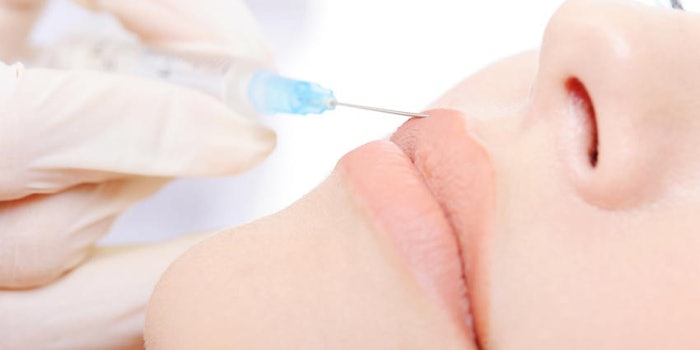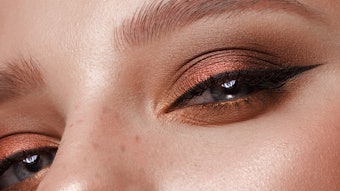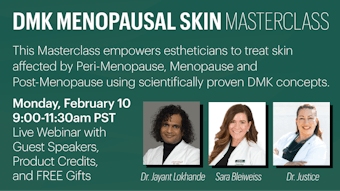
The North American facial injectable market is expected to grow to $5.8 billion by 2024, according to a recent Transparency Market Research report. With clients looking for non-invasive procedures, injectables are popular treatments in medical spas today. However, how can they fit in with other esthetic treatments?
Superficial esthetic treatments include services such as microdermabrasion, dermaplaning, chemical peels and laser treatments. Injectable treatments consist of fillers, neurotoxins and fat-killing agents. Esthetics and injectables need each other because they complement each other. Whether you do or don’t offer both in your practice, you need to be familiar with both to help your clients achieve all of their cosmetic goals.
Fillers 101
The first category of injectable treatments is fillers. Fillers are used in areas of the face where wrinkles or lines are caused by volume loss. The most common areas for fillers are:
- the nasolabial folds (the lines that run from the outside of our nostrils to the corners of our mouth),
- marionette lines (the lines that run from the corners of our mouth down to our chin) and
- nasojugal folds (the areas of volume loss in our cheeks right under our eyes).
Fillers can also be used to build a more youthful chin, restore volume in the temples, fill in depressed scars and create fuller lips. Plus, they are used to treat “old lady hands,” because they add volume to the back of the hands and lessen the appearance of the superficial veins many women don’t like.
Fillers can be divided into hyaluronic acid (HA) and non-hyaluronic acid types. There are many HA fillers on the U.S. market, including Juvederm, Restylane, Voluma and Perlane. These work much like a sponge; they bind with large amounts of water and plump up the space into which they are injected.
When injected by a skilled, qualified professional, fillers are a natural-looking and safe way to help men and women achieve a more youthful, relaxed and happy appearance.
Different fillers are slightly thicker or thinner and, therefore, more appropriate for certain areas of the face or certain amounts of volume loss. For example, Voluma is a thick filler that would not look good in most women’s lips, whereas Juvederm is recommended for that area.
Non-hyaluronic acid fillers include Radiesse and Sculptra. These both work, in part, by stimulating collagen production in the area into which they are injected. In general, the injection of fillers has no down time, although bruising is always possible. When injected by a skilled, qualified professional, fillers are a natural-looking and safe way to help men and women achieve a more youthful, relaxed and happy appearance.
Neurotoxins 101
The next category of injectable treatments is neurotoxins. Three neurotoxins are currently FDA approved in the U.S.: Botox, Dysport and Xeomin. These are used to treat lines or wrinkles caused by repeated underlying muscle movement. The three areas most commonly treated are:
- the glabella (the area in between our eyebrows),
- the forehead and
- crow’s feet around our eyes.
These agents can also be used to treat “smoker’s lines” around the lips, fine lines in the cheeks and protruding platysmal bands in the neck. Botox, Dysport and Xeomin temporarily get rid of existing lines and stop new lines from forming.
Cosmetic doses of neurotoxins are considered very safe, although it is critical to only receive them from trained and experienced medical professionals.
All three of these agents work by disrupting the ability of the nerves in the treated area to communicate with the muscles in that area. Therefore, the muscle does not receive a signal from the nerve telling it to contract. Neurotoxins usually last between 3 to 4 months and then the muscle regains full strength and movement. Cosmetic doses of neurotoxins are considered very safe, although it is critical to only receive them from trained and experienced medical professionals.
Fat-dissolving Compounds
The last category of injectable treatments is fat-dissolving compounds. Currently, Kybella is the only FDA approved such treatment. Kybella is deoxycholic acid, which kills fat cells. This is approved for treatment of submental fat, or the dreaded “double chin.” Injecting Kybella is an easy, in-office procedure that usually requires 3 to 5 treatment sessions about 6 weeks apart.
After injection of Kybella, most people experience 3 to 5 days of swelling and tenderness, which can usually be hidden with a turtleneck or scarf. The results are permanent and help people attain a more youthful profile.
Where do Esthetic Treatments Fit?
While the use of fillers, neurotoxins and Kybella can remarkably improve a patient’s appearance, they cannot help with poor texture, enlarged pores or sun spots. Esthetic treatments, such as chemical peels, microdermabrasion and lasers, as well as good at-home-products, are needed to improve these issues.
If you have a client who has lots of photo-aging, as well as volume loss and wrinkles from muscle movement, you are doing her a disservice if you only treat the photo-aging.
If you have a client who has lots of photo-aging, as well as volume loss and wrinkles from muscle movement, you are doing her a disservice if you only treat the photo-aging. Likewise, you aren’t doing her any favors if you only restore volume and soften the wrinkles from her muscle movement, but don’t address her poor texture and numerous brown spots. Only by acknowledging and offering suggestions for all of those issues are you providing the best in esthetics care.
Offer Recommendations
If you don’t currently have injectable treatments in your medical spa business, what are your options? The first is to simply develop relationships with high-quality injectors and establish a referral system with them.
That way, you can say to a client: “I notice you have these deep wrinkles in between your eyebrows. Do those bother you?” And, if she says “yes,” you can answer, “I don’t treat those, but let me give you the card of somebody who does.” She will appreciate that you have helped resolve an issue that is bothering her, and you will have given her more complete care.
Before recommending anyone, talk to several injectors (or their practice managers). Be sure you like them as people, that their work has good reviews and that they provide excellent customer service.
Before recommending anyone, talk to several injectors (or their practice managers). Be sure you like them as people, that their work has good reviews and that they provide excellent customer service. Referring someone puts your reputation on the line, so you need to ensure that you send your clients to someone who will treat them as well as you do.
Recommend practices that will refer their clients to you as well. All of this should be frankly discussed up front. If the injector to whom you are referring offers facials or other services that you do, clearly state that you expect any clients you refer for injectables to continue coming to you for facials. While none of us can dictate if our clients choose to go elsewhere for facials, we can certainly refer only to other providers who do not encourage that from them.
Injectables In A Medical Spa
The other option is to bring an injector into your own esthetic business. This is a bit more complicated but can add income to your bottom line. Laws vary from state to state regarding who can inject, so do some research first.
Once you understand your state’s laws, you can explore finding a nurse, physician's assitant or doctor to visit your facility half day to one day per week (at least to begin). Usually, the professional doing the injecting purchases the supplies, is responsible for his/her own insurance and pays the spa owner a percentage of what they bill.
Busy injectors can generate anywhere from several hundred to several thousand dollars per hour, so 8% or 10% of that can significantly add to your income.
Busy injectors can generate anywhere from several hundred to several thousand dollars per hour, so 8% or 10% of that can significantly add to your income. The spa owner is usually responsible for booking the appointments and doing some advertising. This is obviously an attractive option because you don’t risk losing esthetic clients to another business, and it potentially brings new clients into your spa.
Whichever option you choose, it is important to understand what injectables do and to be able to discuss them with your clients. This allows you to address all of the aging issues which they have and to ultimately give them complete advice and care. They will be happier and more loyal clients, which benefits both you and them!











